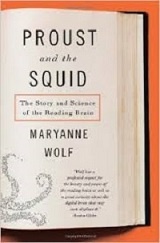Technology and Early Reading

I recently visited this web resource that was started in 2014: Seeding Reading: Investing in Children’s Literacy in a Digital Age.
Seeding Reading offers a series of articles and analysis aimed at answering this question: Given that today’s children are surrounded by digital media of all kinds, how will they learn to read?
Here are two of the articles posted on the site which is hosted by New America’s Education Policy Program and the Joan Ganz Cooney Center at Sesame Workshop:
- Using Digital Recording Devices to Encourage Talk With Children
- A Snapshot of Kids’ Literacy and Language Apps
The articles at Seeding Reading focus on the intersection of technology and reading as it relates to babies, toddlers, preschoolers, and elementary school students. In the introduction to the website, Lisa Guernsey writes:
“Good reading skills are more important than ever for success in life, and yet children and their families are increasingly surrounded by new tools and digital distractions that affect the act of reading and communication. The Common Sense Media report, for example, showed a dip between 2006 and 2013 in the amount of time parents spent reading to their children.”
Guernsey adds this related quote from reading scientist Maryanne Wolfe that describes the challenge:
“Will the present generation become so accustomed to immediate access to on-screen information that the range of attentional, inferential, and reflective capacities in the present reading brain will become less developed?”
This quote is from Maryanne’s book Proust and the Squid: The Story and Science of the Reading Brain.
In an earlier Literacy Lines post Reading and the Brain, I wrote about Maryanne’s work and provided links to her research center at Tuft’s University.
Leave a Reply
1 Comment
Trackbacks/Pingbacks
- Resource: Adaptive Technology for Literacy - Keys to Literacy - […] Technology and Early Reading (February 2015) […]

 Joan Sedita is the founder of Keys to Literacy and author of the Keys to Literacy professional development programs. She is an experienced educator, nationally recognized speaker and teacher trainer. She has worked for over 35 years in the literacy education field and has presented to thousands of teachers and related professionals at schools, colleges, clinics, and professional conferences.
Joan Sedita is the founder of Keys to Literacy and author of the Keys to Literacy professional development programs. She is an experienced educator, nationally recognized speaker and teacher trainer. She has worked for over 35 years in the literacy education field and has presented to thousands of teachers and related professionals at schools, colleges, clinics, and professional conferences.
Joan, thanks for sharing these articles. I’ve always been interested in the earliest literacy practices (mainly, what happens at home before a child enters school). I am even more so now that I am a mom. I think it’s fascinating that someone found a way to actually measure spoken words and conversational turns. Very smart. I am interested to see what this device and the subsequent research tells us.